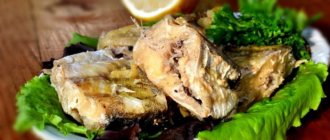Scrambled eggs, fried eggs in oil in other servings:
196
1.96
| Qty | A portion | Calories | In the counter |
| 100 g | 196 | ||
| 1 g | 1.96 | ||
| 78 | 1 small egg = 40g | 78 | |
| 98 | 1 medium egg = 50g | 98 | |
| 127 | 1 large egg = 65g | 127 | |
| 147 | 1 very large egg = 75g | 147 | |
| 5 | 1 teaspoon = 2.6g | 5 | |
| 16 | 1 tablespoon = 8g | 16 |
Calorie content of scrambled eggs
Fried eggs ? European dish is the most popular breakfast in the world. Each nation has its own way of preparing the dish. For example, in our area they cook with fried eggs or scrambled eggs. In Spain ? on a flatbread. Some people like it with lard, others without it, with the addition of vegetables or meat products. This is a dish that you can add almost anything to. True, when standing, its taste deteriorates, so you need to eat it right away.
Composition and nutritional value
Scrambled eggs without oil or spices are a storehouse of nutritional ingredients. It contains: fatty acids, such as linolenic and linoleic acids, proteins, amino acids, polyunsaturated fats, vitamins D, A, E, etc. B (B12, B7, B5, B6, B1, B3), choline (in the yolk), mineral components (iron, phosphorus, calcium, copper, iodine, cobalt). As for bju, in 100 g of product the figures are 11.9/15.3/0.7 g. These values vary in different recipes.
With feta cheese, sheep cheese and tomato – 9.6/13.2/1.1 g From one egg, 1 white with the addition of tofu and champignons – 6.1/3.3/1.5 g. Dish of 4 eggs, tomatoes, herbs, spices, with a piece of black bread – 6.5/7.6/6.6 g. Without oil – 12.2/7.7/0.5 g. From 2 eggs with sausages in sunflower oil – 11 .4/19.0/1.1 g. With green beans, onions and tomatoes – 4.9/9.8/4.1 g. From 3 eggs, fried in oil – 11.3/20.5/0 .6 g.
With zucchini in a slow cooker – 4.9/4.1/3.2 g. With mushrooms – 8.6/12.2/1.1 g. With bacon? 16.3/22.9/0.5 g. In the oven with chicken fillet – 9.7/3.2/2.6 g. With ham and tomatoes – 8.8/13.0/1.6 g. With sausage, cheese, tomatoes – 12.4/18.7/1.2 g. With butter – 11.3/16.68/0.77 g. With vegetables – 5.9/12.2/2, 8 years
How many calories are in scrambled eggs
Composition of nutrients, BJU
Scrambled egg, fried egg
| For quantity: 100 grams | ||
| Calories — 196 | Calories from fat - 134 | |
| BJU | ||
| Total fat content | 14.84g | |
| Saturated | 4.32g | |
| Polyunsaturated | 3.25g | |
| Monounsaturated | 6.18g | |
| Cholesterol | 401 mg | |
| Total carbohydrate content | 0.83g | |
| Dietary fiber | 0g | |
| Sugar | 0.4g | |
| Squirrels | 13.61g | |
| Vitamins and microelements | ||
| A - 219 mcg | C - 0mg | |
| B-6 – 0.18 mg | B-12 - 0.97mcg | |
| D - 2.2 µg | E - 1.31 mg | |
| Calcium 62mkg | Iron 1.89 mg | |
| Magnesium 13mg | Zinc 1.39 mg | |
| Potassium 152 mg | Sodium 207 mg | |
Distribution of calories for BJU:Carbohydrates (5%) Fats (68%) Proteins (27%) | ||
Eating scrambled eggs for weight loss
Eggs are the food product that is most common on the menu when losing weight. They are ideal for those who want to lose weight without losing muscle mass.
The product is rich in protein, and therefore saturates the body well, preventing the feeling of hunger, and, accordingly, nutritional breakdowns and unnecessary snacks. It must be remembered that while in the stage of losing weight, scrambled eggs should be prepared from no more than 2 eggs.
This breakfast dish will give you strength and energy, speed up your metabolism, help build muscle mass, and the vitamins included in this product will help maintain youth, improve the condition of your skin and vision.
The manganese found in eggs will help reduce fat deposits. But you should also exercise and drink enough water to maintain your daily calorie intake.
Recipe for scrambled eggs and sausage. Calorie, chemical composition and nutritional value.
Nutritional value and chemical composition of “scrambled eggs and sausage.”
The table shows the nutritional content (calories, proteins, fats, carbohydrates, vitamins and minerals) per 100 grams of edible portion.
| Nutrient | Quantity | Norm** | % of the norm in 100 g | % of the norm in 100 kcal | 100% normal |
| Calorie content | 213.7 kcal | 1684 kcal | 12.7% | 5.9% | 788 g |
| Squirrels | 11.2 g | 76 g | 14.7% | 6.9% | 679 g |
| Fats | 18.6 g | 56 g | 33.2% | 15.5% | 301 g |
| Carbohydrates | 0.4 g | 219 g | 0.2% | 0.1% | 54750 g |
| Water | 37.1 g | 2273 g | 1.6% | 0.7% | 6127 g |
| Ash | 0.6098 g | ~ | |||
| Vitamins | |||||
| Vitamin A, RE | 158.5 mcg | 900 mcg | 17.6% | 8.2% | 568 g |
| Retinol | 0.137 mg | ~ | |||
| beta carotene | 0.033 mg | 5 mg | 0.7% | 0.3% | 15152 g |
| Vitamin B1, thiamine | 0.043 mg | 1.5 mg | 2.9% | 1.4% | 3488 g |
| Vitamin B2, riboflavin | 0.268 mg | 1.8 mg | 14.9% | 7% | 672 g |
| Vitamin B4, choline | 153.05 mg | 500 mg | 30.6% | 14.3% | 327 g |
| Vitamin B5, pantothenic | 0.793 mg | 5 mg | 15.9% | 7.4% | 631 g |
| Vitamin B6, pyridoxine | 0.085 mg | 2 mg | 4.3% | 2% | 2353 g |
| Vitamin B9, folates | 4.268 mcg | 400 mcg | 1.1% | 0.5% | 9372 g |
| Vitamin B12, cobalamin | 0.317 mcg | 3 mcg | 10.6% | 5% | 946 g |
| Vitamin D, calciferol | 1.341 mcg | 10 mcg | 13.4% | 6.3% | 746 g |
| Vitamin E, alpha tocopherol, TE | 2.244 mg | 15 mg | 15% | 7% | 668 g |
| Vitamin H, biotin | 12.317 mcg | 50 mcg | 24.6% | 11.5% | 406 g |
| Vitamin K, phylloquinone | 0.2 mcg | 120 mcg | 0.2% | 0.1% | 60000 g |
| Vitamin RR, NE | 2.1951 mg | 20 mg | 11% | 5.1% | 911 g |
| Niacin | 0.116 mg | ~ | |||
| Macronutrients | |||||
| Potassium, K | 85.37 mg | 2500 mg | 3.4% | 1.6% | 2928 g |
| Calcium, Ca | 33.54 mg | 1000 mg | 3.4% | 1.6% | 2982 g |
| Magnesium, Mg | 7.32 mg | 400 mg | 1.8% | 0.8% | 5464 g |
| Sodium, Na | 81.71 mg | 1300 mg | 6.3% | 2.9% | 1591 g |
| Sera, S | 107.32 mg | 1000 mg | 10.7% | 5% | 932 g |
| Phosphorus, Ph | 117.2 mg | 800 mg | 14.7% | 6.9% | 683 g |
| Chlorine, Cl | 95.12 mg | 2300 mg | 4.1% | 1.9% | 2418 g |
| Microelements | |||||
| Iron, Fe | 1.524 mg | 18 mg | 8.5% | 4% | 1181 g |
| Yod, I | 12.2 mcg | 150 mcg | 8.1% | 3.8% | 1230 g |
| Cobalt, Co | 6.098 mcg | 10 mcg | 61% | 28.5% | 164 g |
| Manganese, Mn | 0.0177 mg | 2 mg | 0.9% | 0.4% | 11299 g |
| Copper, Cu | 50.61 mcg | 1000 mcg | 5.1% | 2.4% | 1976 |
| Molybdenum, Mo | 3.659 mcg | 70 mcg | 5.2% | 2.4% | 1913 |
| Selenium, Se | 19.329 mcg | 55 mcg | 35.1% | 16.4% | 285 g |
| Fluorine, F | 33.54 mcg | 4000 mcg | 0.8% | 0.4% | 11926 g |
| Chromium, Cr | 2.44 mcg | 50 mcg | 4.9% | 2.3% | 2049 g |
| Zinc, Zn | 0.6768 mg | 12 mg | 5.6% | 2.6% | 1773 |
| Digestible carbohydrates | |||||
| Mono- and disaccharides (sugars) | 0.4 g | max 100 g | |||
| Essential amino acids | |||||
| Arginine* | 0.4817 g | ~ | |||
| Valin | 0.4695 g | ~ | |||
| Histidine* | 0.2073 g | ~ | |||
| Isoleucine | 0.3659 g | ~ | |||
| Leucine | 0.6585 g | ~ | |||
| Lysine | 0.5488 g | ~ | |||
| Methionine | 0.2561 g | ~ | |||
| Methionine + Cysteine | 0.439 g | ~ | |||
| Threonine | 0.372 g | ~ | |||
| Tryptophan | 0.122 g | ~ | |||
| Phenylalanine | 0.3963 g | ~ | |||
| Phenylalanine+Tyrosine | 0.689 g | ~ | |||
| Nonessential amino acids | |||||
| Alanin | 0.4329 g | ~ | |||
| Aspartic acid | 0.75 g | ~ | |||
| Glycine | 0.2561 g | ~ | |||
| Glutamic acid | 1.0793 g | ~ | |||
| Proline | 0.2439 g | ~ | |||
| Serin | 0.5671 g | ~ | |||
| Tyrosine | 0.2927 g | ~ | |||
| Cysteine | 0.1768 g | ~ | |||
| Sterols (sterols) | |||||
| Cholesterol | 347.56 mg | max 300 mg | |||
| beta sitosterol | 8.5366 mg | ~ | |||
| Saturated fatty acids | |||||
| Saturated fatty acids | 2.3 g | max 18.7 g | |||
| 14:0 Miristinovaya | 0.0244 g | ~ | |||
| 15:0 Pentadecane | 0.0061 g | ~ | |||
| 16:0 Palmitinaya | 1.5146 g | ~ | |||
| 17:0 Margarine | 0.0183 g | ~ | |||
| 18:0 Stearic | 0.7116 g | ~ | |||
| 20:0 Arakhinovaya | 0.0311 g | ~ | |||
| 22:0 Begenovaya | 0.0299 g | ~ | |||
| Monounsaturated fatty acids | 4.0463 g | min 16.8 g | 24.1% | 11.3% | |
| 16:1 Palmitoleic | 0.2378 g | ~ | |||
| 17:1 Heptadecene | 0.0061 g | ~ | |||
| 18:1 Oleic (omega-9) | 3.5055 g | ~ | |||
| 20:1 Gadoleic (omega-9) | 0.0244 g | ~ | |||
| Polyunsaturated fatty acids | 3.3207 g | from 11.2 to 20.6 g | 29.6% | 13.9% | |
| 18:2 Linolevaya | 3.2232 g | ~ | |||
| 18:3 Linolenic | 0.0366 g | ~ | |||
| 20:4 Arachidonic | 0.061 g | ~ | |||
| Omega-6 fatty acids | 0.7 g | from 4.7 to 16.8 g | 14.9% | 7% |
Calorie content of fried egg (1 pc.)
How many calories will there be in a chicken egg if it is fried? Indeed, after heat treatment the energy value of the product increases. However, the specific value depends not only on the size of the egg, but also on the chosen cooking method. On average, the calorie content of one fried chicken egg is 125 kcal, but this figure is valid for 100 grams of food.
Photo source: shutterstock.com
It is equally important to consider that various vegetable fats are usually used when frying. Minimum values can be achieved by using olive oil. Then the “weight” of the finished dish will be 230 kcal per 100 g. If you use standard vegetable oil, the figure will increase to 240 kcal.
If you fry eggs on fat-containing products, the energy value of the finished dish will be higher than 255 kcal.
Based on the data obtained, we can say that fried eggs are not the easiest product. Such dishes are not suitable for dietary and low-calorie nutrition if butter, vegetable, olive or other oils were used during their preparation.
ABC RECOMMENDS
How many calories are in a boiled egg: table and BJU
Calorie content of 1 fried egg without oil
The safest way to fry eggs for your figure involves using a non-stick frying pan and avoiding oils.
Photo source: shutterstock.com
It is very easy to achieve the minimum energy value: just fry an egg without oil. A non-stick frying pan needs to be well heated. Break a whole chicken egg (1 piece) directly into a hot frying pan and fry until done.
The calorie content of the finished dish per 100 grams will be 125 kcal, and the fat content will not exceed 9 grams.
Calorie content of 1 fried egg with butter
But most often this product is fried with the addition of sunflower oil, which ultimately increases the energy value of the dish. But this indicator can be adjusted. Please note that the minimum calories in this delicacy are 245 per 100 grams of weight. But each subsequent small spoon added, the volume of which is about 10 ml, increases the nutritional properties of the dish by approximately 90 units. As a result, its calorie content can fluctuate between 240-360 kcal.
If you cook an omelet with 2 eggs, the nutritional value of the dish will be about 140 kcal. But a lot depends on the use of additional components.
You can learn how to fry chicken eggs without a drop of fat from the video:
How many calories are in scrambled eggs with additional ingredients?
Scrambled eggs are delicious on their own, but scrambled eggs to which various ingredients are added are doubly delicious. Everyone can come up with their own special scrambled eggs, which will include their favorite sausage, cheese bought at the supermarket, and something else special. As a result, the resulting dish can easily compete with a pie or pizza in terms of the number of ingredients added to it. Each new product affects the calorie content of scrambled eggs. If you use fatty cheese, the calorie content will increase significantly, the same applies to the use of fatty sausage. Scrambled eggs with tomatoes are especially popular. The addition of these vegetables gives it a special taste that many people love. The presence of tomatoes makes the scrambled eggs rich, but at the same time does not add a large number of extra calories, as happens when other products are used. The calorie content of one tomato is about 20 kcal per 100 g, and the calorie content of scrambled eggs with tomatoes using one egg will be approximately 170 kcal. The calorie content of scrambled eggs from 2 eggs is not difficult to calculate. Cooking scrambled eggs with tomatoes does not require any special skills. Some people prefer to keep the egg yolks whole, while others stir them in a frying pan. To keep the tomatoes soft, first simmer them in a frying pan for a few minutes in oil and then add the eggs. The total cooking time for this dish is 7 to 10 minutes. Considering that the calorie content of scrambled eggs with tomatoes is low, you should give preference to this type of scrambled egg. Today there are many recipes for making scrambled eggs, so you may not get tired of this dish, even if you eat it quite often. However, it is worth remembering that eggs can cause allergies in those who are predisposed to it, and in addition, excessive consumption of eggs can negatively affect the body due to the fact that they contain a large amount of cholesterol.
Scrambled eggs with two eggs and sausage (and cheese)
Every day when preparing scrambled eggs, adding new ingredients, you can get a delicious and original menu. When frying eggs and sausage, doctor's degree is most often used.
The energy value of a scrambled egg made from two eggs with sausage is 183 kcal.
To reduce the calorie content in one hundred grams of the finished dish, you can combine it with vegetables. Adding cheese will increase the calorie content of the dish.
The calorie content of scrambled eggs with sausage and cheese is 210 kcal.
The nutritional value
The energy of a chicken product is assessed by the amount of protein, fat and carbohydrates. The nutritional value of a medium-sized egg fried in vegetable oil is as follows:
- proteins - 7.75;
- fats (saturated, monounsaturated, polyunsaturated) - 8.4 (2.34, 3.411, 502);
- carbohydrates - 0.54;
- sugar - 0.46 g.
However, the amount of cholesterol in one serving reaches 260 mg, due to which this product should not be abused in any case. The distribution of calories is disappointing: fats account for about 70% of the total energy value, proteins are allocated 29%, carbohydrates - 1%. To keep the fat as low as possible, it is recommended to preheat the frying pan well and then sprinkle with vegetable oil or use a pastry brush. Some people prefer to fry eggs in butter or lard - in this case, the calorie content and cholesterol content increase significantly. If you add milk during the cooking process, the number of calories in the finished omelet will increase to 130 (taking into account the minimum fat content of the dairy product). Below we propose to consider each of the heat treatment options and their indicators.
Frying in lard
The method has gained many supporters among people. However, the harm of such a dish is significant: the abundance of fat, cholesterol and calories will benefit few people. Cooking rules:
- You need to take fresh, salted or smoked lard - the choice depends on personal preference.
- Cut the product into pieces. The thickness depends on its future appearance. To get “crackers” with a crust, it is better to cut as thin as possible.
- Throw it into the pan, fry it, start heating it.
The energy value of eggs prepared according to this recipe increases significantly. However, it does not have much benefit, because it is based on fat. The calorie content of scrambled eggs fried in lard is 285 kcal per 100 grams.
Cooking method with butter
For frying, a product made from animal fats, which are extremely high in calories, will be used. However, butter gives the omelette a pleasant aroma, as well as a special taste. That is why many people prefer this option. The calorie content of scrambled eggs prepared in this way is 200 kcal per 100 g. The indicator is high, so it is not suitable for people on a diet. During frying, any fat will be absorbed into the chicken product, causing the calorie count to increase. Even using paper towels to absorb excess won't help here.
Dry frying
The non-stick coating of modern cookware facilitates cooking without the use of auxiliary components. Lenten scrambled eggs are suitable for those strictly following a diet, as well as for those who are prohibited from heavy fried foods due to problems with the gastrointestinal tract, liver, etc. Nutritional value per 60 g with this method:
- kilocalories - 85;
- proteins - 7.24;
- fats (saturated, monounsaturated, polyunsaturated) - 5.73 (1.781, 2.19, 783);
- carbohydrates - 0.44.
However, the amount of cholesterol decreased slightly - to 243 mg. Order of distribution of food components:
- carbohydrates - 2%;
- fats - 64%;
- proteins - 35%.
After studying this article, you learned how many kcal are in scrambled eggs for different options for preparing them, this will help you approach cooking more consciously. An omelette made from 3 medium-sized eggs satisfies hunger for about 4–5 hours, in addition, it contains a lot of vitamins A, B, D, E; amino-, folic and nicotinic acids, biotin, selenium, phosphorus, choline. Chicken eggs occupy a place of honor in sports and dietary nutrition due to their storehouse of easily digestible protein and high nutritional value.









